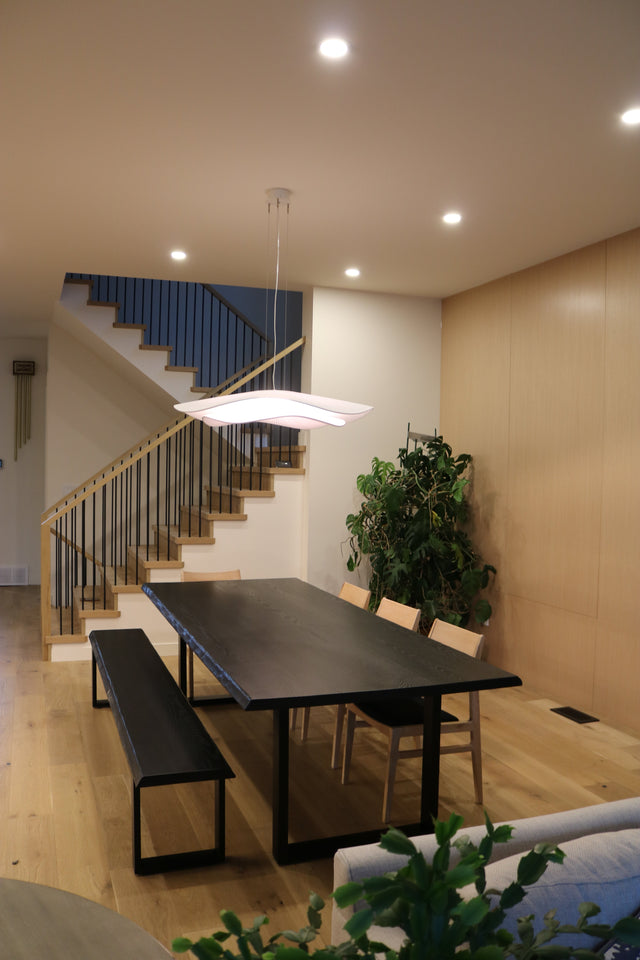The Truth About Grain Direction (and How It Affects Strength & Aesthetics)
You’ve probably noticed it without even realizing it.
That sleek, fluid line running through a tabletop. The way the wood seems to “flow” across the piece. Or the soft shimmer that hits just right in the morning light.
That’s grain direction and it’s not just a design choice.
It’s one of the most important factors in how a piece of solid wood furniture looks, feels, and holds up over time.
At YEG Woodcraft, we don’t just pick wood for color or texture.
We choose it for direction. Because it affects everything.
What Is Grain Direction?
Grain direction refers to the alignment of the wood fibers. When we cut, shape, or join a piece of hardwood, we pay attention to whether the grain runs lengthwise, crosswise, or diagonally across the surface.
This matters because grain direction impacts:
-
Structural strength
-
Movement and durability
-
Finishing smoothness
-
Visual flow and aesthetic appeal
1. Grain = Strength (or Weakness)
Wood is strongest along the grain. That’s why table tops, shelves, and benches are usually constructed with the grain running lengthwise it’s the most stable and load-bearing.
When grain runs against the flow or is poorly matched across boards, it can create:
-
Weak spots
-
Splitting under pressure
-
Warping over time
That’s why we always align grain based on how the furniture will be used not just how it looks.
2. It Affects How the Wood Ages
Alberta’s humidity swings can be brutal on solid wood. Grain direction helps us design for seasonal movement.
Boards with well-aligned grain tend to move predictably expanding and contracting across the width, but staying stable lengthwise.
Misaligned grain = unexpected cracks and warping.
Matched grain = furniture that adapts to your home, year-round.
3. It Shapes the Entire Aesthetic
Grain isn’t just structure it’s story.
It shows where the tree grew faster, where it healed, where it twisted.
When we match grain direction intentionally, the final piece flows like a single visual thought.
When we don’t, it can look choppy, inconsistent, or cheap.
That’s the difference between handcrafted and factory-made.
4. End Grain vs Edge Grain vs Face Grain
Want to go deeper?
-
Face grain (most common): smooth, wide grain lines; ideal for tabletops, vanities, and showpieces
-
Edge grain: thinner lines, stronger structure; great for cutting boards, benches, or long surfaces
-
End grain: shows growth rings in full; stunning for butcher blocks, but high-maintenance if misused
We help clients choose based on both function and feel.
5. We Let the Grain Lead the Design
Some woodworkers force grain into symmetry.
We don’t.
We work with the grain mirroring it, book-matching it, or intentionally breaking it for drama. Every choice is made with care.
Because when grain direction is respected, it becomes the soul of the piece.
It’s the Detail You Don’t See But You’ll Always Feel
Grain direction might not be the first thing you notice.
But it’s the reason your table doesn’t crack.
The reason it feels balanced.
The reason it draws your eye across the room, and makes people stop and say: “That’s beautiful.”
At YEG Woodcraft, we don’t cut corners on the stuff most people never think about.
Because that’s what makes a piece unforgettable.

